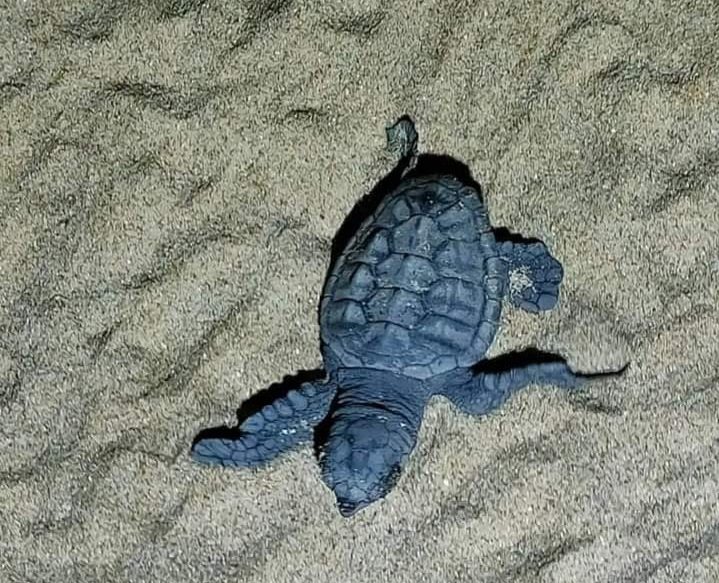By Andrew Atkinson
A loggerhead turtle nest has been discovered on the beach of El País in Valencia with a plethora of hatchlings that had gone unnoticed.
“The nest had gone unnoticed, probably due to the female spawning when the curfew was in effect,” said Jesús Tomás, a researcher at the Marine Zoology Unit of the University of Valencia.
Like all sea turtles, the loggerhead does not return to a nest once the eggs are laid with the eggs left to be incubated by the warm sands and hatch after an incubation period of 60-75 days.
Loggerhead sea turtles can live up to 70 to 80 years, or more with female loggerheads reaching maturity after 35 years.
The current total estimate of loggerhead sea turtles is around 50,000, whereas the species once numbered several million throughout the world’s oceans.
Loggerhead turtles, like all sea turtles, are marine reptiles and must come to the surface to breathe air. Adult female sea turtles return to land to lay their eggs in the sand being remarkable navigators and usually return to a beach in the general area where they hatched decades earlier.
San Pedro del Pinatar conservation centre has been the home of Boba (Caretta Caretta) – loggerhead turtles – that were born last year in La Manga del Mar Menor, recently released into the sea, as featured by The Leader.
Initially 47 turtles were at the IMIDA centre in San Pedro del Pinatar, which hatched in La Manga del Mar Menor last summer, as part of the Head-Starting technique, designed to increase their chances of survival.
In 2019 five events of eggs being laid were recorded for the first time in a century. In 2020 in La Manga 100 eggs were laid.
Hatchlings turtles could still appear on any beach. If you see any call 112 immediately.
Caption: Loggerhead turtle nest discovered on beach of El País, Valencia, that had gone unnoticed.





